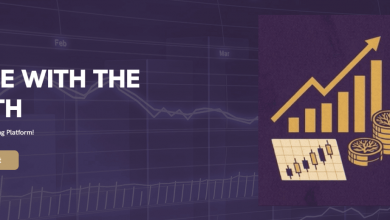A Free Online Library of Self-Help Books That Reached Over 10,000 Visitors in 12 Days: An Interview with Its Creator, Dr. Calynn M. Lawrence
In a world where stress, anxiety, trauma, and depression are on the rise, people need ongoing support to keep their heads above water. Proper mental healthcare and tools are critical in keeping humanity at peace. Yet, these things are often inaccessible to the most vulnerable populations. That is where the Holistic Healing Source for Marginalized Society steps in. Through a plethora of free content including lectures, presentations, directories, courses, and now a library of mental health focused, spirit led e-books, they stand in the gap at the intersection of community wellness, social justice, and education. Its Founder, Dr. Calynn Lawrence, set a world record earlier this year at age 29 with its launch, being the youngest ever to found a free minority resource center with global accreditation for its research. In this exclusive interview with Dr. Lawrence, we discuss the journey to such groundbreaking success and where she plans to go from here.
As a woman of many talents, you have a reputation as a critically acclaimed humanitarian and media personality with numerous awards and “first ever” and “youngest ever” historic honors in your field. You also recently finished graduate school to earn a Master of Science in Management & Leadership and a doctorate in Faith-Based Counseling, alongside several professional certifications in trauma and neuro, and becoming inducted into The American Academy of Experts in Traumatic Stress at age 28. How did you do it? What did that look like?
Thank you so much. I’ve had a strong work ethic since I was young. I come from a family full of strong, determined, career women whose ambitions and natural gifts empowered them to beat the odds and persevere towards their goals. The real keys to my success are, firstly, that I pursue work that I am deeply invested in and passionate about so that even the longest hours and the latest nights still feel fulfilling at the end of it all. As you can imagine, I’m a very busy person so it is an absolute must that whatever I do, it’s near and dear to my heart. Second, I have impeccable time management and live by a calendar. I also cultivated this habit in my youth. Balancing a demanding career and full time graduate school was only possible because I am committed to a set schedule and obsessively, strategically time block to keep myself on track. I am not now, nor have I ever been a “fly by the seat of my pants,” spontaneous type of person. It just doesn’t work for my lifestyle and all of the priorities that I’m juggling. Lastly, having an unbelievable support system was crucial to get me through. I am forever grateful that my loved ones (family and friends), my mental health network, and my faith in God kept me strengthened.
That is very relatable and sound advice. How did the idea to launch your online library come about, and what did the process look like behind the scenes? Reaching over 10,000 visitors in 12 days is remarkable and must have taken a considerable amount of preparation.
I am someone who understands both sides of the coin to mental health being a practitioner and a person who receives care for my Major Depressive Disorder. I also have innumerable family, friends and associates who live with chronic mental health conditions. So, I have an insatiable desire to improve access to quality treatment for all, particularly those who are disadvantaged due to being BIPOC, women, LGBTQ+ or disabled.
Recognizing the importance of self-help and individual work in healing, I wanted to provide an opportunity for anyone anywhere of any means to be able to identify and process their anxiety, stress, depression and/or trauma as well as explore alternative wellness techniques such as dream analysis, prayer and worship tracking, manifestation, etc. Between guides, workbooks, planners, journals and activity books, we have something for everyone. That breadth of options was fundamental to us reaching such a broad array of interested readers. After dedicating 100+ hours of labor and several hundred dollars into the production and promotion of the library, we’ve seen fantastic results and incredible feedback! Hopefully, we will continue to grow from here.
That is an outstanding effort to positively impact the lives of others. Keep up the good work! We also know that you are campaigning for office to further expand your influence in the mental health field. Can you tell us more about that?
Thank you kindly! As I often say, I’m for the people until my last breath. That is what motivated me to enter the running for the 2025 National Alliance on Mental Illness Illinois Board of Directors. As the largest grassroots mental health organization in the country (USA), NAMI really set the bar in creating countless life saving programs that help millions of people, with myself being one of them as a regular participant in their support groups. Because of this, it’d be an honor for me to serve on their state board and volunteer my skills in marketing, media and events to further their mission. I am a testament to the gravity of their services, having been through hell and back, and want to aid in their efforts to grow even larger in size and affect.
Wow. You’re going to change the world someday and we would love to see what good you could accomplish if elected to the NAMI Illinois board. Where can interested people support you?
I appreciate your encouragement. It means the world to me! Anyone who wants to support me on this journey can follow me on social media and check out my websites. The library launch is only the beginning for The Holistic Healing Source for Marginalized Society! I can’t wait for people to see what else we have in store to help them live their best lives and be their best selves.
Access the Library and Other Free Resources: https://www.holistichealingsource.org/
Visit Calynn’s Blog: https://www.calynnmlawrence.com/
Follow @holistichealingsource and @calynnmlawrence on Instagram and Facebook




